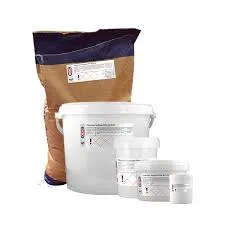
Exploring the Role and Safety of E620 Food Additive in Modern Cuisine
Understanding E620 The Role and Impact of Food Additive
In the world of food additives, E620 has garnered attention as a naturally occurring compound known as L-glutamic acid. This amino acid plays a critical role in various biological processes and serves as a flavor enhancer in the food industry. Understanding E620 is essential for consumers and food manufacturers alike, as it helps navigate the complexities of food composition, safety, and labeling.
What is E620?
E620, or L-glutamic acid, is one of the 20 amino acids that are essential building blocks of proteins. It is classified as a non-essential amino acid because the human body can produce it naturally, primarily from other amino acids and various metabolic processes. Found abundantly in protein-rich foods such as meat, fish, eggs, dairy products, and certain vegetables, L-glutamic acid is crucial for maintaining cellular metabolism and neurotransmission.
In the context of food additives, E620 is often utilized for its umami flavor—sometimes referred to as the fifth taste, in addition to sweet, sour, bitter, and salty. This savory taste is a primary characteristic of many dishes and is particularly prevalent in Asian cuisines, where it is celebrated for enhancing the overall flavor profile of various foods.
Uses of E620 in Food Production
E620 is predominantly used in the food industry to enhance flavors in various products, ranging from processed foods to snacks
. It is frequently found in- Soups and Broths E620 is often added to enhance the savory notes of these products. - Sauces and Seasonings Many sauces, marinades, and seasoning blends incorporate E620 to provide depth and richness. - Snacks Chips, crackers, and other savory snacks often contain E620 to improve taste and consumer appeal. The additive is not only valued for its flavor-enhancing properties but also for its ability to impart a savory taste without excessive sodium content, making it a popular alternative to salt in many products.
e620 food additive

Safety and Regulatory Status
The safety of food additives like E620 is rigorously evaluated by health authorities globally. The European Food Safety Authority (EFSA) and the US Food and Drug Administration (FDA) recognize L-glutamic acid as safe for consumption within established limits. While most people can consume it without any adverse effects, some individuals may experience sensitivity or allergic reactions, though such cases are considered rare.
It is essential for manufacturers to adhere to prescribed safety guidelines to ensure that the levels of E620 are within acceptable limits. Proper labeling is also critical, as consumers have a right to know what is in their food and make informed choices based on dietary requirements or preferences.
The Consumer Perspective
As consumers become increasingly health-conscious and aware of what goes into their food, understanding additives like E620 becomes vital. While many embrace the use of natural flavor enhancers to improve food quality, others prefer to avoid additives altogether, favoring whole and minimally processed foods.
For those concerned about artificial additives, it's important to note that E620 is considered a natural compound and is often viewed more favorably than synthetic preservatives. Nevertheless, consumer education around food labeling and ingredients remains paramount, as transparency fosters trust and informed decision-making.
Conclusion
E620, or L-glutamic acid, exemplifies the fascinating interplay between food science and consumer choices. As both a naturally occurring amino acid and a widely used food additive, it significantly contributes to the culinary world by enhancing flavors and improving food quality. While deemed safe by regulatory authorities, attention to labeling and consumer education remains crucial in navigating the intricacies of food additives. As the dialogue around food safety and ingredient transparency continues to evolve, understanding compounds like E620 will empower consumers to make choices aligned with their health and culinary preferences.
-
Understanding Synthetic Rubber OptionsNewsApr.27,2025
-
Trichloroisocyanuric Acid: Essential for Clean and Safe WaterNewsApr.27,2025
-
Sodium Dichloroisocyanurate: Key to Safe Water TreatmentNewsApr.27,2025
-
Sodium Acid Pyrophosphate: Essential in Modern Food ProcessingNewsApr.27,2025
-
Essential Water Treatment ChemicalsNewsApr.27,2025
-
Denatured Alcohol and Its Industrial UsesNewsApr.27,2025
-
The Versatile Uses of Sodium BicarbonateNewsApr.24,2025
Hebei Tenger Chemical Technology Co., Ltd. focuses on the chemical industry and is committed to the export service of chemical raw materials.
-

view more DiethanolisopropanolamineIn the ever-growing field of chemical solutions, diethanolisopropanolamine (DEIPA) stands out as a versatile and important compound. Due to its unique chemical structure and properties, DEIPA is of interest to various industries including construction, personal care, and agriculture. -

view more TriisopropanolamineTriisopropanolamine (TIPA) alkanol amine substance, is a kind of alcohol amine compound with amino and alcohol hydroxyl, and because of its molecules contains both amino and hydroxyl. -

view more Tetramethyl Thiuram DisulfideTetramethyl thiuram disulfide, also known as TMTD, is a white to light-yellow powder with a distinct sulfur-like odor. It is soluble in organic solvents such as benzene, acetone, and ethyl acetate, making it highly versatile for use in different formulations. TMTD is known for its excellent vulcanization acceleration properties, which makes it a key ingredient in the production of rubber products. Additionally, it acts as an effective fungicide and bactericide, making it valuable in agricultural applications. Its high purity and stability ensure consistent performance, making it a preferred choice for manufacturers across various industries.











